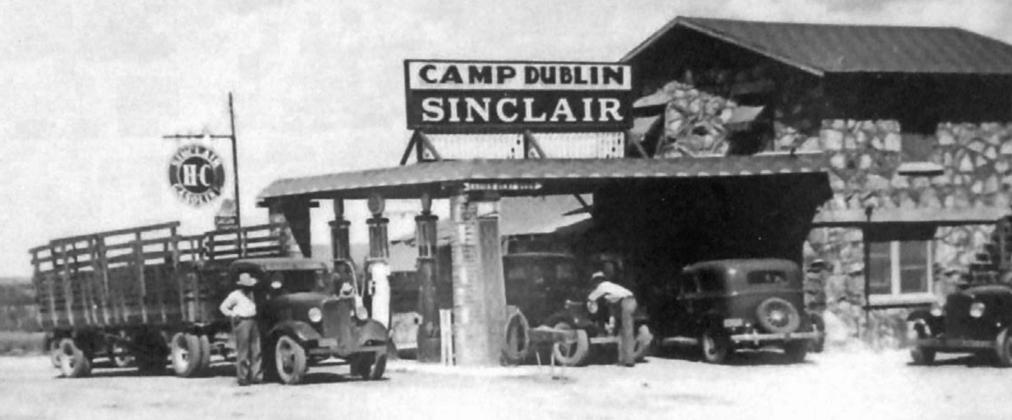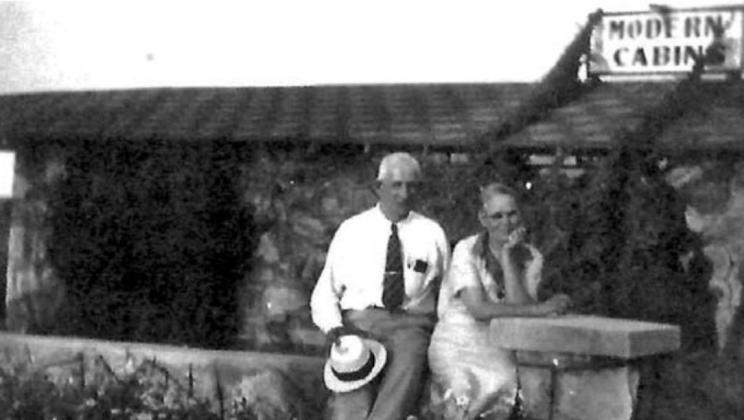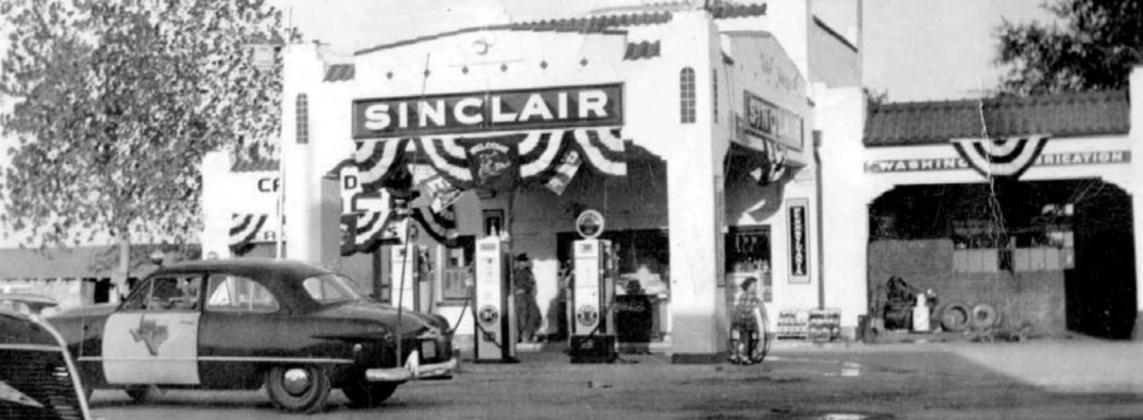One of the early service stations of Dublin was called Camp Dublin. Its opening was announced in the May 2, 1924 Dublin Progress. It was located at the corner of North Patrick and Clinton Streets. Dublin Dairy Queen is located there now. William Mayfield was the manager when the station opened. While the two story building had the business downstairs, the living quarters were upstairs.
Not all travelers driving through Dublin in the mid 1920s had enough money to rent a fancy hotel room for the night. An alternative was to rent a cabin at Camp Dublin. Pictures taken of the Colburn Bowl in the mid 1940s show the service station and a long rock building north of it that must have been divided up into separate cabins. With all the people coming to town for the rodeo and other events, it must have been a popular place.
It had comfortable beds with innerspring mattresses and private baths, hot and cold running water and electric lights. “Tourists are made to feel at home here.” (Dublin Progress Sept. 23, 1938)
One person said that going down to Camp Dublin at night might be taking a risk. A few unsavory characters came through town and you never know if a fight might start late at night.
The service station facilities included a compressed air lift for repairing, washing and greasing cars. Sinclair gasoline and lubricants were sold there exclusively. The station was open both day and night.
Attached to the station was a cafe that provided some of the best food in Dublin including a fine Sunday chicken dinner. The cafe catered to the traveling public and to locals as well. They had short orders, sandwiches, ice cream, cold drinks and good coffee.(Dublin Progress, September 23, 1938)
The cafe was a hang-out for teenagers during the early 1950s. I was told that it had the best jukebox in town. It had the early Elvis tunes as well as early Hank Williams songs. Students were particularly fond of both.
The station was originally built just before Patrick Street was bricked all the way from downtown to the corner of Patrick and Clinton Street. That may have helped make it a popular stop in Dublin.



